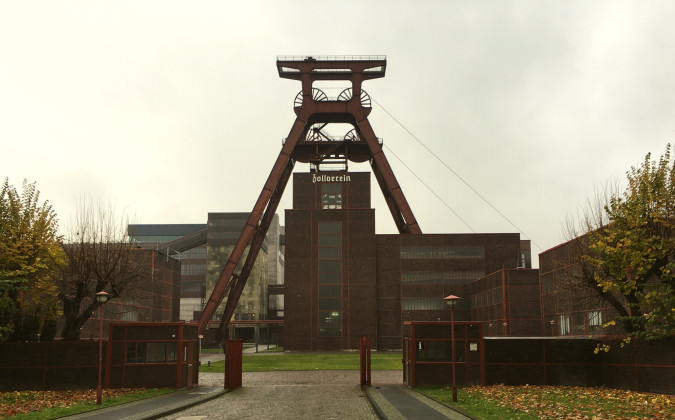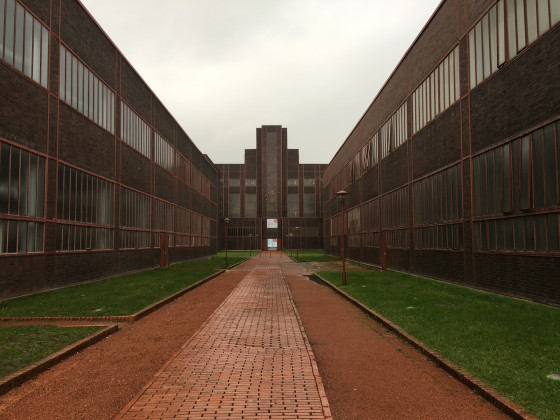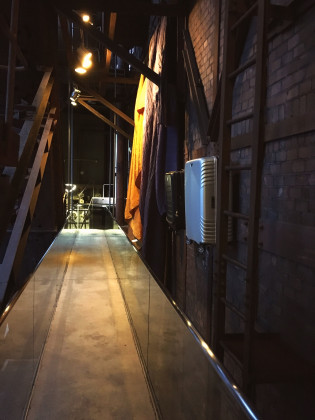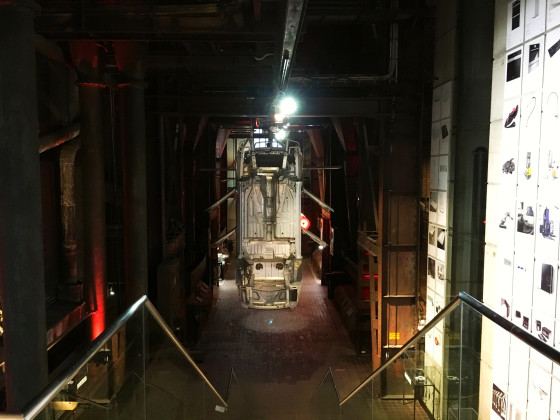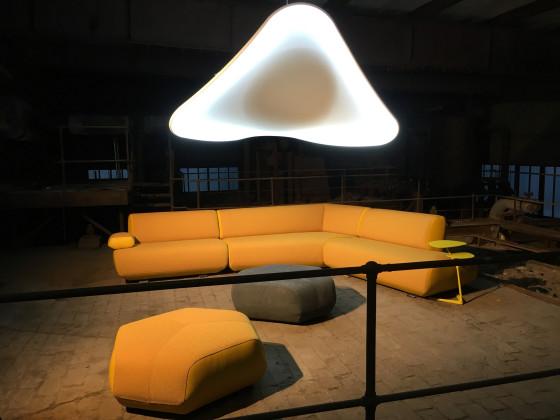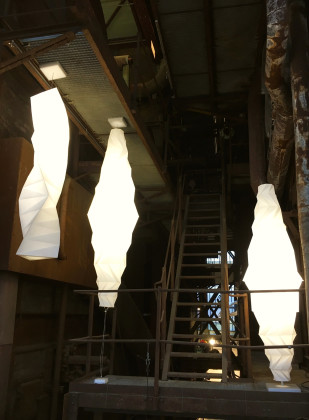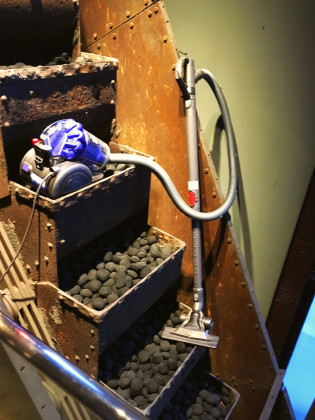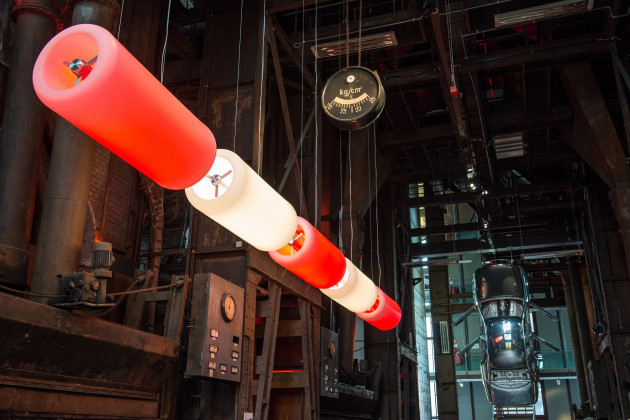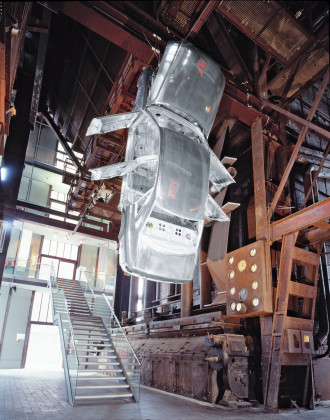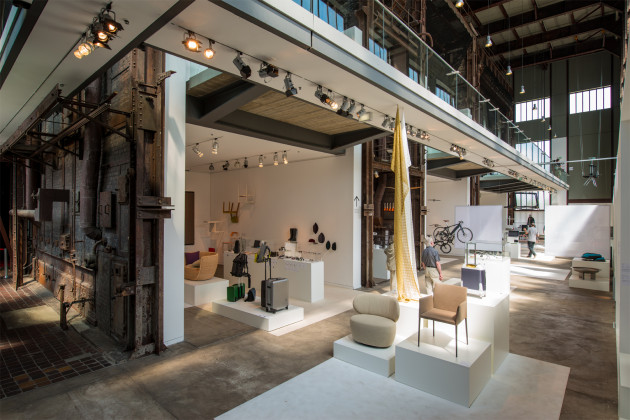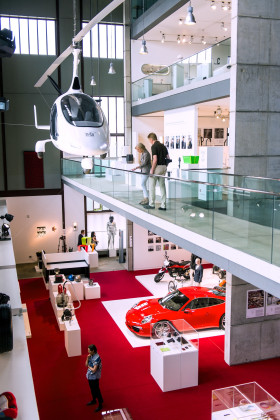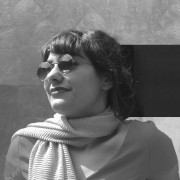Groundbreaking Fictions
“Man is equally incapable of seeing the nothingness from which he emerges and the infinity in which he is engulfed.”
Blaise Pascal Pensées
“Everyone knows that nothing on earth exerts such pressure on the human soul as a void.”
Stefan Zweig - Chess Story
I always think that we, as human beings, are seeking recurrent loops in life and then using them in order to comprehend time. It seems to me like this situation, in other words our habit of seeing changing conditions as a sign, emerged from our need to engage with time. So why are we struggling with the concept known as time so much? I think the reason is not to fall into the clutches of the situation that can be described as nothingness, because in a state of nothingness where nothing changes, we don't know whether or not time is running, either forward or backward. Thus time as we know it becomes meaningless. And I think if we lose the concept of time to which we have tied our very existence, it’ll reveal a situation that we wouldn't be able to deal with. Maybe we just create all our daily struggles because we sense the ever-encroaching oblivion of eternity and nothingness, or maybe it is just a way to repress the terrible nothingness that awaits us.
I believe that museums occupy a distinctive position among the acts of placemaking created by mankind. It seems to me as if the time here, unlike other places, loses its linear form that we perceive and blurs the boundaries of what we distinguish as past, future, and present, like it's mocking us. It makes the past overlap instantly with the concept of moment which I describe as the present time. The time in which I live as now has been actually past. And I am holding the past in my hands, trying to detach the present from it. I can bring the past in today whenever I want. Or I can confront other people’s past with my present.
The Red Dot Museum takes all these time collisions in my head out of abstract questions and embodies them in concrete ways. First of all, the building is influenced by the strong history of the campus -Zollverin- where it resides. While the campus is already like time-travelling in the city itself, each place has its own vortices. The buildings, which were created as rectangular prisms on the field, and the symmetrical relationships among them leave a bizarre impact on the viewer. The museum, which had been designed as the boiler room of the surrounding coalmines, is but one of the magnificent examples of industrial architecture found here. It’s an important example of the feasibility of re-tooling and re-working production sites that are no longer useful as the products of the industries they were built to supply have fallen by the wayside. The brick structures located symmetrically on both sides represent contemporary German architecture. The cold and powerful effect of the industrial site seems to be breaking due to the warmth emanating from the fire-red brick. At this point, another factor that I never expected comes into the scene and dramatizes the influence of the architecture's industrial coolness - the drab gray weather.
A shop, museum café, and an exhibition area are located at the entrance of the building. Unfortunately, it is a bit disappointing to encounter these after beholding the magnificence of the building when first encountered from afar. After such a powerful effect, it felt like I was facing a place that I didn’t think was built to last. However, this situation changed suddenly as I passed through an ordinary door; I reached stairs made out of pure concrete and glass handrails. Inside, it welcomed me with a fascinating design that I would've never expected to see: rusty gigantic boiler flues, a car hung in the middle, red and white neon lights made from aircraft engine propellers, and a twisted blood-red seat that serves as a contrast to the entire structure. Moreover, the dramatic lighting which penetrated through the rusty structures within this atmosphere left me shocked, even awe-stricken. It looked as if all these huge structures had been sleeping and could start working any moment. This encounter is an encapsulation of the entire building, which I will be seeing quite soon, a building which combines industrial architecture with modern consumer culture.
At Red Dot Museum, I came across one of the features of museums which always irked me when I visited them. The entire exhibition scenario takes the individual as a moving eye and builds an experience on it. Even though the sense of hearing is occasionally utilized in the venue, the experience usually comes from a single perspective. However, this unilateral point of view greets the visitor in a completely different setup, quite different from other museums. Interestingly, one never loses their concentration. I think of it as an outcome of the tear-down of conventional exposition contexts that I had in my mind. My mind is alive, managing to play games and mess around with its pre-existing schemata. It removes the visual templates that I had been familiar with in order to see the world differently and even presents them as grotesque distortions of what they once were. This effect enables the visitor to push the limits of their imagination, like the feeling after seeing a flying car or a sailboat hanging in the air. Perhaps, the fact that the design itself is a phantasmagoria triggering new flights of fancy may increase the dynamism of this situation.
On the upper floors of Red Dot Museum, I found myself observing the products from an interesting point of view that I had not thought of before. I could see the objects from a top-down perspective this time, the same objects which I had been fascinated by when I looked from down below a moment ago. The initial feeling created by my mind oddly loses its effect when I looked from above, despite the fact that I was looking at the exact same object. This situation seems quite interesting to me. Maybe the height from which objects are exhibited is significant due to the meanings that we attribute to our inner hierarchy. Perhaps the seat that I have just been watching from below loses its mystery at the point where it is accessible and available. It could be because of the mysterious aura that surrounds the unreachable. Additionally, if I can use the products at the end, my perception of everything shifts. I do not consider the seat that I’m sitting on solely in the light of ergonomic or visual quality; I also question the positioning of it within its own context. This exposition setup allows visitors to reach many new insights while viewing the object. It removes the obligation of looking at the object from one constraining point of view.
It seemed to me that in many parts of the place, the balance of masculinity and femininity is well-maintained. It looks like the blood-red seat folded in the middle of a gigantic masculine industrial structure dating back to nearly a century ago is making a reference to this situation. The high ceiling further heightens the effect. In this case, when the lighting of the ambience comes into play, it seems that the entire setup is complete. The same situation can be observed in many other parts of the building. Another very impressive place is the pink seat that stands in the middle of many rusty structures. The visitor, within this formation, finds himself analyzing the compositional values of the items just like viewing a painting. When viewed from the opposite side, a triple-decker exhibition setup can be seen. The single sitting units at the bottom seem to be lined up in the cold rows of military formations. In the middle, there is a sitting area in pink cylindrical forms that stretches out between the dramatic texture and the colors of the whole rusty structure, while on the top floor, the chairs are upside down. The most striking feature of this scene is that none of the items come into prominence. It feels like everything is where it’s supposed to be, and it cannot exist anywhere else.
As a visitor at Red Dot Museum, there were two significant points which made me ponder. Firstly, it plays with the perception of the conventional works which are exhibited in the museum, whether the exhibited products are up-to-date or the current works are exhibited in the museum, not in the exhibition hall. Secondly, it made me ruminate on the sense of admiration of the objects that human beings had in their own hands and the contexts they were in. This was quite peculiar to me as one who, unlike ordinary visitors, is familiar with product design. While one side of my mind holds a sense of admiration for objects I have communicated with, the other side finds it rather odd. It tries to figure out the response to ‘Why am I so fascinated by these products when I am well aware of the production process?’ I suppose it’s a collision of states of attraction and admiration which are inherent to our kind. In short, the museum is a groundbreaking structure with its sense of place and its exhibition setup, and it will open many new avenues of thought within the mind.
Related Content:
-

İşbank Painting Sculpture Museum
-

MUMO: The Innovative Museum Truck
-

La Vetrina dell’Ingegno
-

Contrasting Ceramics - Princessehof
-

Quake Museum
-

Wall, Hall, Dust & Rust
-
The Elephant in the Gallery
Melis Uğurlu commentates on her unique experience of Elephant West, a gallery that relieves visitors from the fatigue of white cubes
-
Heterogenoeus Architectures and Vitra Campus
The form in architecture initiates with the instincts of humankind to provide safe haven and protection and later on differs depending on the understanding of each period of history
 27.04.2017
27.04.2017



